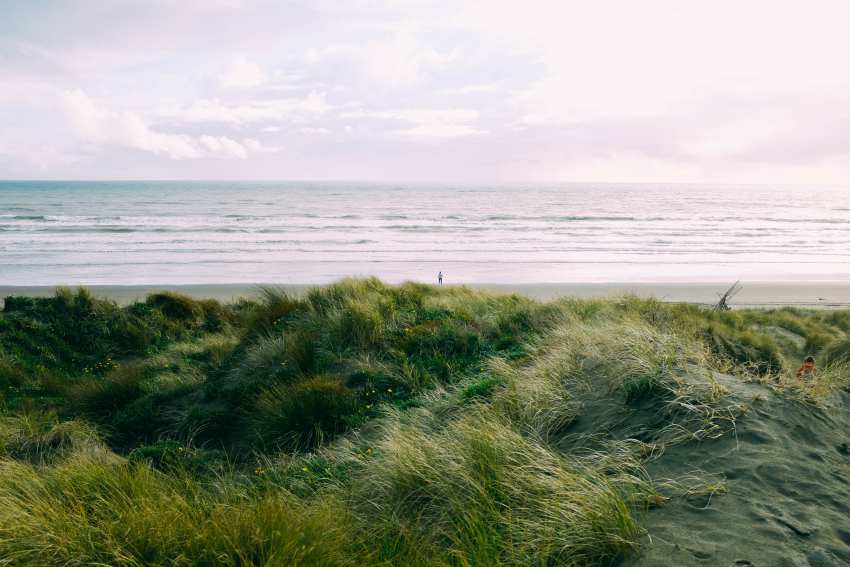Friday, July 18, 2025

Ile de Ré, off the coast of La Rochelle in France, has also become a destination for those who want to experience a more quiet and genuine form of tourism. The island, which is famous for its scenic landscapes, salt flats and cute villages, has served as a growing draw for holidaymakers desiring to escape from mass tourism in recent years. But the île de Ré and its 18,000 residents are committed to preserving the identity of their village by promoting sustainability and “désaturé” tourism on the island’s precious environment and culture. But by selectively sharing their most cherished sites, the residents have managed to strike a balance of catering to guests and maintaining the integrity that makes the island so unique.
Unlike the overstuffed Mediterranean territories that have fallen to the predations of mass tourism, Île de Ré has prioritized conservation over profit. Careful tourism management has protected the island’s fragile ecosystems, traditional industries including salt harvesting and oyster farming, and picturesque villages. This model for tourism is a blue print for other destinations overwhelmed by overtourism, proving that it can be done — that you can save what’s precious while extracting tourism’s economic good.
How Overtourism Is Affecting Île de Ré
Overtourism, when destinations are overrun by visitors, has been a hot topic for many of the world’s most popular travel sites. And, given the emergence of social media and Instagram tourism, there has been an increase in demand for iconic locations, often with little consideration given to how environmentally sustainable this is. Île de Ré’s own natural beauty and familiar ways of doing things have not spared it. Double-edged sword Though the island remains a world away from the over-tourism woes affecting some Mediterranean hotspots, the growing interest from travellers has left it evident that the control of the number of visitors is vital to the upkeep of both the island lifestyle and its landscape.
With tourists come both blessings and stress. Now, on one hand, tourism provides an income for local businesses, restaurants and craft producers. On the other, it adds pressure to the island’s natural resources including the salt marshes, the vineyards and biodiverse ecosystems. Without good management, tourism can all too easily turn into over-crowding, pollution and the death of precisely the qualities that make Île de Ré so unusual.
In the face of these pressures, the island’s inhabitants have taken a discriminating standpoint when it comes to tourism. By regulating what parts of the land are accessed, like the private cycling tracks that snake through private vineyards and salt flats, the island’s keepers make sure that visitors who want the real flavor of the island leave the least possible amount of damage. This is a model which puts sustainability ahead of profit, and which rewards visitors who respect the rhythms and traditions of Île de Ré that have been repeated for centuries.
The Significance of Sustainable Tourism Development
The most remarkable feature of Île de Ré tourism is its dedicated cycling network. The island has a large network of cycling paths that not only facilitate environmentally friendly mobility, but also encourage visitors to slow down. Bike tourism `cuts the carbon,not the corners´ filmBus fares, too, Joebikes like to think that when a holidaymaker cycles around Du Mea in this way, it educates the traveler about the island´s real culture. By keeping cars out of village centers, as in Saint-Martin-de-Ré and Ars-en-Ré, the locals preserve the character and charm of their towns, while holding onto a sense of community threatened by mass tourism.
Alongside its cycling infrastructure, Île de Ré’s no-vehicle zones help to contribute to the relaxed, pedestrian-friendly feel that the island is known for. The streets of Saint-Martin-de-Ré and Ars-en-Ré are narrow and cobbled, designed in eras before super tour buses and mass tourism. Restricting cars from roaming the island not only helps ensure visitors can wander through the towns without interfering in the locals’ daily affairs.
On top of that, Île de Ré is encouraging small independent businesses over large chains, which means the tourism model here is to the benefit of family-run shops, Artisan producers and small-scale businesses. Local salt co—ops and oyster farms are central to this commitment, maintaining the island’s character while offering visitors the opportunity to encounter something authentic and genuinely representative of Île de Ré.
Salt Sinage and Oyster Farming Tradition
The tradition of salt production lies at the heart of Île de Ré’s cultural identity. The island’s salt pans, which spread across around 400 hectares, have been used for salt production since ancient times. It is an art handed down from generation to generation, and wants to keep the salter’s guard at the foot of this hill where the Coopérative des Sauniers, a union of local saltern workers for preserving this timeless knowledge. But the pressures of tourism are now threatening this tradition. Now, as increasing numbers of visitors are drawn to the island, the threat of the fragile habitats being disturbed increases.
Likewise, oyster farming is another stronghold of island life and commerce. The island’s oyster farms are kept small by design, and many do not open their gates for tourists — at all. As the Industry is made up with Family run units, We have to make this decision to maintain quality and the Family type Environment. Locals know that if commercialization were to take hold, their craft might be compromised and the intimacy of their work sullied.
Salt harvesting and oyster farming are both essential parts of the island identity. Therefore, the Île de Ré store owners are committed to safeguarding these industries from the negative impacts surrounding mass tourism that would undoubtedly affect these areas, regulating the access to the sites to be sure they are not only still in existence in the decades from now.
Preserving the Island’s Serpentine Beauty (And Secret Paths)
Île de Ré’s salt marshes, vineyards and private cycling tracks are much more than simply pretty, they are the guardians of the island’s individual identity. The good people of Île de Ré regulate access to these natural resources ensuring their life on the island remains the real deal. Many of the island’s secret paths — open only to residents — take you through private property with snapshots from island life far from the bustle.
But the emergence of Instagram tourism has fueled worries about the effect of social media on the island’s delicate ecosystem. The urge to take photographs of the landscape of the island has resulted in some tourists going off the beaten track, in turn causing damage to the delicate ecosystems. To address the issue, the island is implementing a code of practice, which encourages visa-holders to get to know the island before they arrive, respect the natural environment and only share locations that have been approved for visitation.
The natural protection against overtourism: the Seasonal Rhythm
One of the best ways Île de Ré regulates tourism is by its seasons. In the picture-postcard beach towns that hem the island, restaurants shut from October to March and places to stay are scarce. The natural off-season of winter gives a break to island residents who will have this beautiful island back to itself and continue the island tradition of living on the island. It acts as a natural defense against year-round tourist pressure that would overwhelm the mechanisms of Needar, an island that is still remote enough for the immigration authorities to consider rescuing lost hotters like Smith and Sprotte from its dunes.
The local government and the residents have regulated tourism, especially during the holiday season from June to September which is the salt harvesting season and most visitors come to visit the lake. By limiting access to sensitive zones and providing small-group tours, they make sure that tourism does more good than harm for the local economy, and that it does not swamp the island.
Conclusion -Île de Ré’s Sustainable Tourism Model
Ile de Ré represents a sustainable tourism model that emphasizing the maintenance of natural resources, cultural inheritance, and local habits in catering to tourists. Concentrating on high-quality experiences rather than visitor numbers, the island has reconciled tourism growth with environmental concerns. By only sharing with a select few its treasures – salt marshes, cycle routes, artisanal industries – this is an island where children and grandchildren (literally) can have the same authentic experiences that made Île de Ré so unique!
As the world grapples with problems caused by overtourism, Île de Ré provides a model of how communities can welcome tourism without sacrificing their way of life. With the island’s eco-friendly approach, support of small business, and focus on environmental preservation it is a benchmark for other destinations in successfully maintaining and managing the effort to find an equilibrium of tourism and preservation.
References:
Île de Ré Tourism Office, French Ministry of Tourism.
Tags: eco-friendly tourism France, eco-tourism France, france, French islands, Île de Ré, Île de Ré tourism, La Rochelle, Overtourism Solutions, oyster farming Île de Ré, preserving local culture, responsible travel Île de Ré, salt marsh tourism, sustainable tourism



